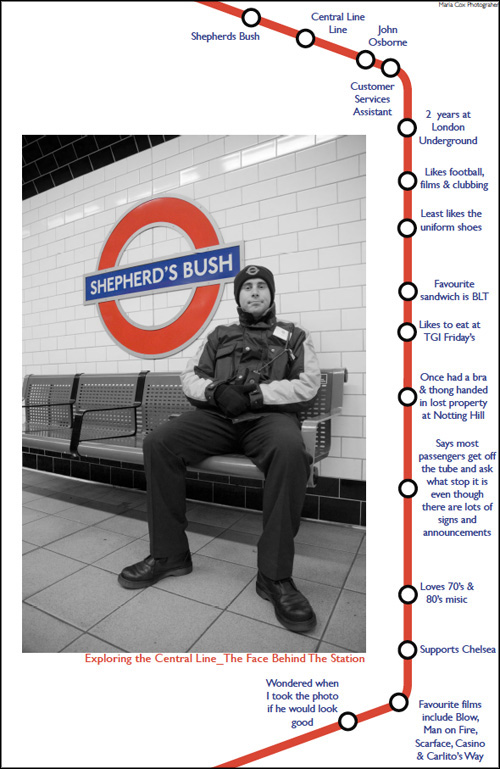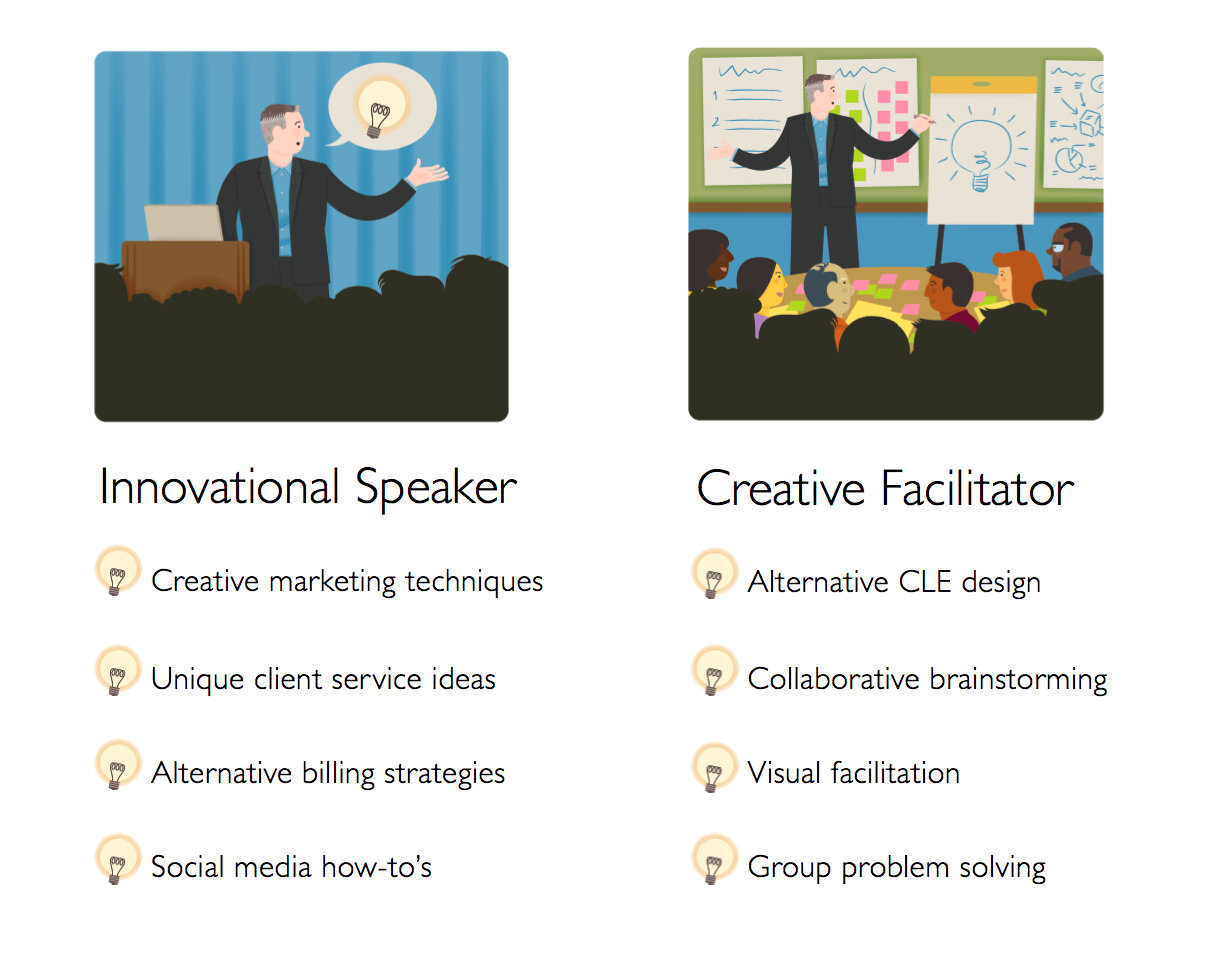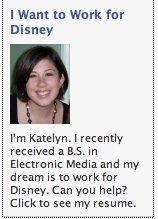Ten Rules of Law Firm Retreats
Whether your next law firm retreat takes place at a tropical location or in the firm’s conference room, there are several things to keep in mind to make it productive, useful and fun. Here are my Ten “Rules” for law firm retreats. Feel free to add your own in the comments. Enjoy!
1. When planning a retreat, the most important voice at the table should belong to your best clients. Ask them what you need to improve upon in the coming year, and invite them if you dare.2. At a good retreat, firm management spends as much time listening to the lawyers as they do talking to them. At a great retreat, that ratio is closer to 3:1.
3. It is far more important for attorneys to think together at your next firm retreat than it is for them to golf together.
4. If you don’t make time for lawyers to improve your firm during the retreat, they’re less likely to take time to improve your firm when the retreat is done.
5. In big firms, the first thing you should teach lawyers is one another’s names. Familiarity builds collegiality. Lawyers won’t care what their colleagues do until they know who they are.
6. “Networking” cocktail parties don’t encourage firm-wide collaboration as much as they encourage firm-wide inebriation.
7. If the firm retreat is the only time lawyers talk about marketing, it will be the only time they think about marketing. Same goes for client service.
8. Your staff knows more about how to serve your clients well than your associates do. Bring them along, value their opinions and act on their suggestions. You’ll find that the cost of their attendance is far lower than the cost of their absence.
9. The three questions every lawyer should be able to answer after a retreat are: “What can I do better?” “Who should I know better?” and “Why should I be better?”
10. The two costliest items at any firm retreat are the time and attention of the attendees. Use them wisely.
If you'd like some help implementing some of these suggestions, check out LexThink and drop me a line. If you'd like to see more Ten Rules posts, here they are.

Ask Your Clients What Surprised Them
Paul Graham collects some sage advice from the founders of startups he's helped fund. Preparing for a talk, he sent emails to all the founders and asked them "what surprised them about starting a startup?" According to Paul, asking what surprised them amounted to "asking what I got wrong, because if I'd explained things well enough, nothing should have surprised them."
This is a very powerful question that should be on every lawyers post-matter client survey:
What surprised you the most?
Like Paul, you're asking your clients in a polite way about the things you got wrong (or that they think you did because you didn't communicate well). And I'm quite certain you'll get powerful, surprising and sometimes harshly critical responses -- which are just the types of feedback you can use to eliminate surprises in the future for you and for your clients.

Twenty Ideas
Here's a handout I've been using to supplement my presentations titled Twenty Ideas. I hope it is useful to you.
Free Webinar and Kansas City Keynote This Week
If you'd like to hear (or see me) speak, you've got two opportunities this week. The first is a (free) webinar tomorrow at 1pm Eastern and the second is in Kansas City on Thursday, where I'll be keynoting the Kansas City Solo and Small Firm Conference.
In both, I'll be sharing innovative strategies lawyers can use to build their practices, identify their ideal clients and thrive in this down economy.

I'm in the Spotlight
Friend and colleague JoAnna Forshee interviewed me for InsideLegal's "Legal Innovators Spotlight" a few weeks ago. The interview is up here, and is mostly about LexThink and the services I offer the legal industry.
However, there's one question (along with my answer) that I wanted to share here:
What do you see as the biggest challenge facing the legal industry now and in the upcoming year?
Most lawyers are focused on returning their practices to profitability -- which is a near term problem for many of us. However, I think a far greater challenge is looming in the distance, and that is irrelevance.
For far too long, lawyers have taken their clients and customers for granted. Quietly, real alternatives are emerging that are making lawyers less necessary to clients. In just the last five years, we’ve seen more and more consumers turn first to the web as they draft their will, start their LLC, etc. This is a trend that will only continue, and lawyers must begin thinking about a day when the least valuable thing they have to offer their clients is advice.
I'd love your feedback here.

Advertise What Matters (to Clients)
If you're wondering what to put on your website (or in that next yellow pages ad), take a cue from the Central Florida Regional Hospital in Sanford, Florida. Instead of trumpeting just how great their doctors are, they're using a nearby billboard to display a real-time statistic that lots of people care about: ER wait times.
From the Orlando Sentinel:
To find out how long the wait is in the emergency room at Central Florida Regional Hospital in Sanford, you can check its Web site, send a text, or, now, cruise past a billboard on Interstate 4.The hospital this week started posting its ER wait times on the billboard, on the eastbound side near State Road 46. It's part of a campaign to use technology to spread the word about decreasing the wait.
"Putting our wait times to see a physician in real time on a billboard is just one more step in educating the community about our service," said Wendy Brandon, the hospital's chief executive officer. The wait times to see a physician are updated every 30 minutes and reflect an average from the previous four hours.
What do your clients want to know about you? Do they see the answer in your advertising? They should.

Bonus Your Staff Before Your Attorneys
In this great TED talk by author Dan Pink, he argues that while incentives improve people's performance on routine tasks, just the opposite is true when creativity or problem solving is involved. Incentives not only fail to improve performance on creative tasks, they diminish it. What's more, the larger the reward, the worse the performance. Might be something to think about when deciding just how to motivate lawyers.
Watch the entire talk (it is roughly 18 minutes), it is worth your time.

Want cooperation? Think reciprocation.
If you struggle to get prospects to fill out a lengthy form before meeting with you, perhaps some new research will change your mind.
In a study summarized here in the Nuromarketing blog, rearchers compared the effectiveness of two strategies often employed by websites to collect personal data from visitors: requiring the visitor's info before allowing them to access specific content (a reward strategy), or requesting it after they've already seen the content (a reciprocity strategy). The result:
It turns out that a reciprocity strategy works better – give them the info they want, and then ask for their information. In the impressively titled Embedded Persuasive Strategies to Obtain Visitors’ Data: Comparing Reward and Reciprocity in an Amateur, Knowledge-Based Website, Gamberini et al found that twice as many visitors gave up their information if they were able to access the information first. It’s counterintuitive, perhaps, but even though these visitors were under no obligation to complete the form, they converted at double the rate of visitors seeing the “mandatory” form.
What does this mean? Whenever you ask prospects to do something, work with reciprocity in mind. Instead of demanding their cooperation before meeting you, ask for it after they do. You'll likely get more cooperation and better information from them, while starting the representation off on the right foot.

Focus Wins
From Seth Godin:
When you have someone who is willing to accomplish A without worrying about B and C, they will almost always defeat you in accomplishing A.

Introduce Your Staff to Your Clients
Here's a great idea from the London Underground (subway) via the U.K.'s Creative Review. The Underground hired photographer Maria Cox to visit each of the London Underground's 264 stations and take a picture of someone who worked there.
The photographs are combined with some information about each person, and then displayed at the station where he or she works. Here's the profile of John Osborne, a customer services assistant at the Shepherd's Bush Line station:

It makes me wonder how many businesses here in the states could benefit from a similar approach. I think many clients would be more apt to hire a firm that cared enough about their employees to feature them in this way. What do you think?

Free Photos for Great Presentations
I use my own photos in almost all of my presentations. If you're not up to taking your own pics, but still want to avoid cheesy clip art, check out this resource: 37 Places to Get Free Stock Images. I really like (and use) Every Stock Photo and Stock Exchange.

Culture Lessons from NetFlix
Netflix recently released a "Reference Guide" titled "Culture" on Slideshare, giving everyone a chance to peek "behind the curtain" at the values the innovative company expects from its employees. There are some real nuggets in the presentation. Here are a few of my favorites:
The "Keeper Test" for managers:
Which of my people, if they told me they were leaving in two months for a similar job at a peer company, whould I fight hard to keep..."
The irrelevance of "hard" work:
It is about effectiveness -- not effort -- even though effectiveness is harder to asses than effort. We don't measure people by how many evenings or weekends they are in their cube. We do try to measure peole by how much, how quickly and how well they get work done -- especially under deadline.
The refusal to tolerate "Brilliant Jerks" in the workplace:
For us, the cost to teamwork is too high.
The preference of "Rapid Recovery" from vs. Preventing error:
You may have heard preventing error is cheaper than fixing it ... not so in creative environments.
The entire policy for expensing, entertainment, gifts and travel:
Act in Netflix's Best Interests.
Please read the whole thing, and while you do, imagine how a law firm would thrive (or fail) if it adopted a similar culture as Netflix's.
Thanks to the Emerging Leadership Circle blog for the pointer to the presentation!

Minnesota Strategic Solutions for Solos & Small Firms
If you're in Duluth next week (or anywhere in Minnesota), come on by the Strategic Solutions for Solo & Small Firm Conference presented by Minnesota CLE. I'm delivering two speeches and participating in four workshops, including the debut of my "Real Innovation for Real Lawyers" talk, and another based upon my Twelve Truths of Time (slides below). I hope to see you there!

Join LexThink on Facebook
I just started a LexThink business page on Facebook. I've got big changes in store for LexThink, including a complete website redesign, but wanted an easy place to post news, events, upcoming speaking gigs, etc. Head on over there, and please become a fan.

Business Card or Brochure? Both.
I'm headed to the ACLEA conference in Salt Lake City this week. I'm a new member of the Association of Continuing Legal Education professionals (I know, the acronym needs some help) and am looking forward to my first ACLEA event -- especially because I'm doing lots more speaking about innovation, creativity, marketing, alternative billing, etc. to lawyers, firms and at CLE's.
Since I'm working on a website redesign (live in August) that helps show visually what I do, I thought I'd use some of the images we've created for the web on new 3" x 5" business cards that double as a kind of brochure. (I'm using a 6" x 5" card folded in half).
Here's the inside of the folded card:
And here's the back and front:

And here are the LexThink cards I've been using. Let me know what you think! Here's the card in pdf format.

Using Facebook Ads to Find Legal Work
Attention Law Students: There's a great post over at One Day One Job abut Using Facebook Ads to Make Employers Hunt You Down that's definitely worth a read. It recaps an experiment where job seekers used targeted Facebook ads to reach people who worked for companies they admired. For Katelyn Hill (below), here's what happened:
Katelyn Hill recently graduated from Abilene Christian University with a degree in Electronic Media. She loves television and movies and hopes to work in the entertainment industry, so she targeted the Walt Disney Company with her Facebook advertising campaign. Her ad received 685 clicks, which garnered 21 e-mails and 4 Facebook messages. She was offered one job interview, but wasn’t quite qualified for the position, so she declined. She also had several e-mails from individuals who offered to forward her resume to their supervisors. Many others offered her general advice on finding a job with Disney or commented on how creative they thought her ad campaign was.
I think this is a brilliant idea. It isn't a reach to take this approach and target attorneys and staff at specific firms you'd like to work for.
It could (though your malpractice carrier may disagree) also work for lawyers targeting specific clients or types of work as well.
One Thousand Dollars an Hour is Dumb.
If you must compete on price, here's a McDonald's billboard that might give your marketing people some inspiration:
Found on Billboardom. Full Story Here.
What Do Your Clients Think About You?
Here's an exercise I'm working on for a Client Service Workbook that's been an on-and-off project of mine for a while.
There will be several comic strip-like panels depicting scenes of a client interacting with you and your staff. Each will be on a worksheet you can give to yourself and your staff. Everyone will fill in the empty thought-bubbles with what they believe the "client" is thinking in situations like when:
They're in the reception area waiting for their appointment:
They're listening to you give them advice:
They just received their bill:
Once the thoughts are filled in, you compare and discuss the similarities and differences. To make the exercise even more valuable, ask your current and former clients to complete the same exercise.
Let me know what you think. I'm committed to finishing the Workbook by the end of the year, and will be testing similar exercises with my consulting and coaching clients 'til then.
100 Ways to Be More Creative
I found this great list of 100 Simple, Low-Cost, Soulful Ways to Be More Creative on the Job and wanted to share it with you. Next time you're stuck, pick a few off the list at random and give them a shot.
Using Simple Technology isn't Easy
Last week, I was listening to several lawyers complain about how hard it was to convince new associates to learn the technology everyone else in the firm had been using for years. From embracing dictation to using books instead of online tools, newbies "just didn't get it" according the the group of senior attorneys.
As I tried to explain to them that the technology they utilized, though pretty basic, wasn't easier to use for someone unfamiliar with it, I struggled to find a good example. Today, I finally found one in the unlikeliest of places: an article by a teenager who gave up his iPod for a week and replaced it with his father's 25-year-old Sony Walkman.
The article is hilarious at times, but highlights just how older, "simpler" technology isn't actually easier to use for people unaccustomed to it. Some of the best quotes:
My dad had told me it was the iPod of its day. He had told me it was big, but I hadn't realised he meant THAT big. It was the size of a small book.
It took me three days to figure out that there was another side to thetape. That was not the only naive mistake that I made; I mistook themetal/normal switch on the Walkman for a genre-specific equaliser, butlater I discovered that it was in fact used to switch between twodifferent types of cassette.
Personally, I'm relieved I live in the digital age, with bigger choice,more functions and smaller devices. I'm relieved that the majority oftechnological advancement happened before I was born, as I can'timagine having to use such basic equipment every day.

